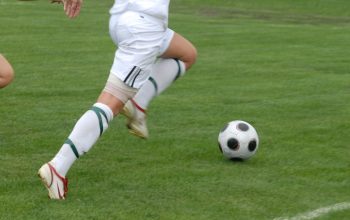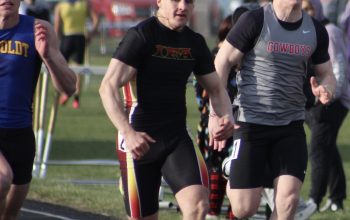The IGHSAU has released the COVID-19 guidelines for the upcoming volleyball season, along with joining the IHSAA in releasing the information specific to cross country and football.
For all three sports this year, general guidelines are for both the student-athletes and spectators to please practice social distancing and to do their part to keep everyone safe. They encourage the wearing of a face covering when attending an event, even with cross country and football being outdoor sports, and host schools can require it. The six-foot rule should be practiced as much as possible, and this applies to the press box personnel and concession stand lines as well. Anyone feeling sick, or that has been exposed to someone who is or is know to have COVID-19, is asked to not attend. In all cases, the home team will provide proper administrative supervision at contests to assure compliance with all guidelines.
Specific to cross country meets, hugging, shaking hands or fist bumps are prohibited. Staggered, wave or interval starts may be considered. The course layout can be widened to at least six feet. Host schools should consider using finish corrals and FAT timing for large meets. If not using FAT, consider an alternative to address congestion at the finish line. Student-athletes are encouraged to remain upright and walk through the chute.
When setting up your team camp/tent, social distance as much as possible from the other teams. Each student-athlete should be responsible for their own supplies, and they should be labeled for identification.
Volleyball pre-match procedures will be different for this year. The coin-toss will have limited attendees, and they must maintain social distance and all are strongly encouraged to wear face coverings during that time. Gloves, long sleeves and leg coverings (or under garments) are permissible but not required. Rosters will not be exchanged during that time, but instead at the officials’ table prior to the toss. Teams must provide their own volleyballs and they must be marked for identification for teams involved. The host school must provide three volleyballs, or can be more, for in-set rotation so that each can be sanitized when needed. Warm-up rules have been altered to conform to social distancing requirements. Pre and postgame handshakes are eliminated in favor of a simple wave.
During matches, no spectators will be allowed in the first two rows. Teams will not switch benches between sets, and student-athletes will be allowed to stand near the bench area to help achieve distancing. Players must use hand sanitizer often and at specific times, and coaches will be strongly encouraged to do the same. Coaches, student-athletes and bench personnel are all strongly encouraged to wear face coverings while sitting in their respective area. Other student-athlete considerations include furnishing their own supplies such as water bottles and towels (clearly labeled) and letting coaches know when they’re not feeling well.
When it comes to football, for practices or game nights, spacing needs to be also six-feet during stretching and drills. Avoid close congregating during coaching instruction. Use hand sanitizer as much as possible, and student-athletes are encouraged to provide their own. Masks are encouraged but not required. Equipment shared by the student-athletes should be sanitized both before and after practice and games. Student-athletes should never share towels. All personal clothing and other items, along with game uniforms, should be taken home and cleaned before the next use.
For game nights, the team box will be expanded 30 additional yards for players only. Coaches are to still stay inside the 25-yard lines. Coaches and officials should follow six-foot distancing when interacting with each other. Schools can and should consider roster limits (including travel rosters) to help with social distancing. Limits will be made on people at the coin toss, and distancing with be maintained. No hand shakes are allowed prior to or following the toss or the game. Appropriate non-contact means can be used.
There will be mandatory official’s timeouts during the game for sanitizing and hydrating. Masks are encouraged, but not required, for student-athletes, coaches, officials, chain gangs, ball retrievers, statisticians, managers and trainers. Shields, unless attached to the helmet, are not allowed. It’s recommended to keep mouth guards in at all times, so it doesn’t need to be sanitized between plays. Exposed skin covering is recommended, which can include long-sleeved shirts and tights. Water will be for consumption only, not for rinsing the mouth or mouthpiece. Spitting is strictly prohibited. Game balls should be sanitized throughout the contest, and facility sanitizing, including team benches, should be done after each game.
For all sports, all workout clothing, game day uniforms and towels should be washed and clean before the next practice or event. When common areas like locker rooms and showers are used, distancing should be practiced as much as possible.
The admission table for all spectators may include either proper sanitation practices or a free-will donation container, whichever the host school chooses. Potential options for postseason play (playoffs for football, regionals for volleyball, qualifiers for cross country), and state championships, will be determined at a later date depending on the current status of the coronavirus.



